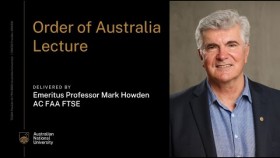ANU experts comment on National Hydrogen Strategy
The COAG Energy Council agreed to the National Hydrogen Strategy at its meeting on 22 November 2019. Leading experts from The Australian National University comment on the strategy and what opportunities hydrogen energy provides Australia.
Professor Ken Baldwin
Director, ANU Energy Change Institute
Director, Zero-Carbon Energy for the Asia-Pacific Grand Challenge
“Australia has some of the best solar and wind resources in the world, and is currently installing solar and wind electricity generation at the highest rate of any major economy.
“We are in the box seat to generate green hydrogen from water using renewable electricity, enabling us to future-proof our role as a global powerhouse in a decarbonising world.
“Countries like Japan, South Korea and Germany are already knocking on Australia’s door.
“If we grasp the opportunity to build a green hydrogen export industry that provides the same amount of energy to the world as our current LNG exports, then the renewable energy industry used to create this will dwarf the size of our current national grid many times over.”
Dr Fiona J Beck
ANU College of Engineering and Computer Science
Convenor – Hydrogen Fuels, Zero-Carbon Energy for the Asia-Pacific Grand Challenge
“Australia has the potential to become a major exporter of hydrogen, and in doing so help the global energy sector transition to a zero-carbon future.
“But there is still a lot of R&D needed to understand the implications of different pathways for hydrogen production, transport, and use.
“We need to understand how different technologies can best support the development of a new Australian export industry and cut global greenhouse gas emissions.”
Professor Frank Jotzo
Director, Centre for Climate and Energy Policy
ANU Crawford School of Public Policy
“A renewables-based export industry could be a major opportunity.
“Australia has a comparative advantage in renewables and could export zero emissions energy to countries that are less well endowed.
“Hydrogen could be one way of achieving this, if technology costs come down a lot. Green steel and aluminium and electricity exports via cable are other options.
“Australia needs to position for this by investing in research, technology development and pilot projects, working with likely customers in Japan, South Korea, China and Germany.
“A looming question is whether hydrogen would be made using solar and wind power, or on the basis of brown coal. Even with carbon capture and storage, brown hydrogen would have significant remaining emissions. That process is likely cheaper at the start.
“But it would bump up Australia’s emissions, and it could mean stranded assets when emissions constraints bite, and if importers shun coal-based hydrogen in future.”
Dr Igor Skyrabin
Convenor, Hydrogen Economy Research Cluster
ANU Energy Change Institute
"Blessed with abundant renewable energy resources, Australia has an unmatched potential to benefit from the hydrogen energy vector.
“We can do this by developing high-tech solutions for new industries and integrating local renewable energy networks with emerging international green hydrogen markets.”
Dr James Prest
College of Law, ANU
"Australia can sell renewable hydrogen to the world and command a premium price from green buyers – but only if it takes the steps necessary to set up a Guarantee of Origin scheme.
This involves the Clean Energy Regulator issuing certificates for each unit of green hydrogen produced.
The National Hydrogen Strategy has set out the steps for such a Scheme.
What’s needed is to implement, not ignore the recommendations of the Strategy.
The Federal Parliament can make laws to implement this scheme consistent with leading international approaches.”










